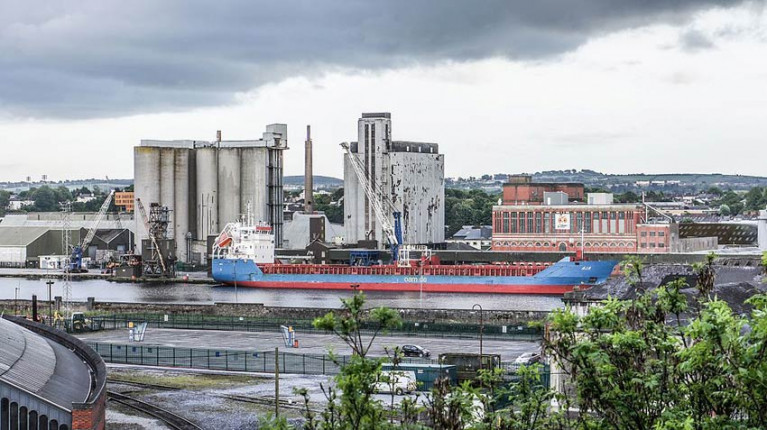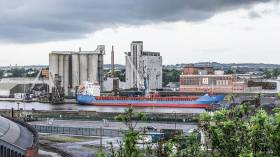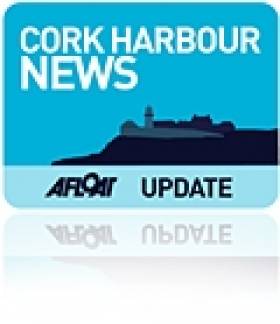Displaying items by tag: Cork Docklands
The role of art and culture in re-imagining the future of port cities is the theme of an online Cork CityLabs seminar on June 7th.
In the Cork context, Cork Docklands is set to be Ireland’s largest regeneration project which will accommodate a population of around 25,000, a workforce of approximately 29,000, and a student population of more than 3,500.
Over 146 hectares of land will be developed over a 20-year period, which will see homes, schools, medical and social services, sports and recreation facilities, office space, pubs, bars, restaurants, hotels, retail and two new bridges for the city.
Speakers at the third annual Cork CityLabs “Future of Port” seminar, including representatives of Espacio Open in Bilbao; and the European Bauhaus Lighthouse project, Bauhaus of the Seas Sails in Malmo.
Full event details and link to join here
New Cork Docklands Development Office is Welcomed
Cork City Council and the Land Development Agency have set up a new office to oversee development of the Cork Docklands district.
And Taoiseach Micheál Martin was among those who hailed the move as “an opportunity to create a magnet for investment into Cork city” that aims to create 29,000 jobs and homes for 25,000 people.
The Irish Times reports on the new Cork City Docklands Delivery Office, which is tasked with developing almost 146 hectares of land along the city’s quays.
Among the projects it will evaluate are developments at Marina Park, the River Lee’s potential as an amenity and plans for a new transport hub at Kent Station, as well as two new bridges for the city.
The Irish Times has more on the story HERE.
#ShippingCentre -According to Irish Maritime Development Office, there is a proposal to create a world-class cluster of international shipping services orientated companies (ISSC) based in Cork Docklands.
The proposed maritime cluster would also be a major urban regeneration scheme led by a group of individual and well-established property developers who plan to provide appropriate commercial, residential, and cultural amenities within the ISSC.
Technology is the number one FDI employer with over 14,000 professionals employed in the sector in Cork city. It is evident that technology is both transforming and disrupting financial services. The central role which technology will play in finance over the next decade is demonstrated by the decision by international bank State Street to partner with University College Cork and Zhejiang University to set up a Fintech Research and Development facility in Cork.
More recently there have been several developments in the area of alternative asset management and international private equity and this is an area of tremendous potential, given the success of these initiatives.
BNY Mellon also opened a business focused on mutual fund administration in 2007. Later they were also joined by Apex Fund Services, Hedgeserv and IPES, all establishing related operations. Other small clusters have built around expertise in investments and insurance. Davy, Investec and Blackbee all having a presence while in banking Bank of Ireland and AIB both provide a full service Corporate Banking offering in the region to FDI companies.
In leasing, Ardmore Shipping Corporation, an international operator and owner of a fleet of product and chemical tankers are engaged in worldwide trade. Ardmore have their principal operations office based in Cork (see related Bantry Bay ship story). All of the Big 4 (Deloitte, EY, KPMG and PWC) professional services firms have full offerings in the city.
With a working age population of over 400,000 within a one hour commute of the city, there is clearly large capacity for tremendous expansion. Underpinning all of this success is a favourable cost base and excellent quality of life metrics.
The new centre will bring employment, investment and a new lease of life to the Cork Docklands and will continue to grow Cork city as a new financial hub in Ireland.
Cork Docklands To Benefit From €6m Upgrade
#CorkDocklands - Cork’s Docklands are in line for a sprucing up with council proposals for a €6 million upgrade of its entrance, as the Evening Echo reports.
Albert Quay, Victoria Road, Albert Road and four traffic junctions would benefit from new pedestrian amenities such as a waterside plaza and cycling and public transport infrastructure under the scheme, which also aims to open two Docklands sites for housing within the next four years.
It’s expected that consultants will be appointed to the project in the new year, with designs to be finalised over the following 12 months.
The news follows plans unveiled in September for a transformation of the city’s Horgan’s Quay with offices, apartments and a new plaza adjacent to the River Lee.
Another project, Navigation Square, is being developed on the other side of lands put up for sale by the Port of Cork on Custom House Quay earlier this year.
The Evening Echo has more on the story HERE.
#PortOfCork - Stakeholders in Cork Harbour have proposed bringing the mooted International Shipping Services Centre to Leeside, as the Irish Examiner reports.
Previously earmarked for Dublin Port, as discussed at the second Our Ocean Wealth summit in 2015, those plans have stalled in recent months — leaving a gap for Cork to step in and pitch Ireland’s second city as a “natural fit”, according to Port of Cork commercial manager Michael McCarthy.
That pitch was discussed at a briefing in the Port of Cork earlier this week, which gathered the IMDO, IDA Ireland and CBRE consultant Cormac Megannety, who devised the ISSC concept some years ago.
The meeting came after the news that Ireland’s shipping and transport sector is the largest contributor in turnover to the growth of the country’s ‘blue economy’, as previously reported on Afloat.ie.
Marine Minister Michael Creed and his predecessor, now Foreign Affairs Minister Simon Coveney, have also voiced their backing for the proposal, which has also been suggested as part of the existing €1 billion regeneration scheme for Cork’s Docklands.
The Irish Examiner has more on the story HERE.
Cork Docklands Site Comes To Market
#CorkHarbour - More than three acres of Cork docklands are coming to market, as the Irish Examiner reports.
The lands comprise a warehouse property between Monahan Road and Centre Park road east of the city centre, in an area already set for transformation between the revamped Páirc Uí Chaoimh and the new Marina Park regeneration project, adjacent to Cork City Marina by the former showgrounds.
Commercial and residential developers alike are expected to express interest in the 3.31-acre site, zoned for mixed use, and with a guide price of €1.2 million per acre.
Interest in this part of the city is growing with the imminent move of the Port of Cork downriver — and city planners are already meeting with potential buyers for the port’s historic buildings on Custom House Quay.
The Irish Examiner has more on the story HERE.
Naval Salvage Tug Docks in Cork City
Built by Schichau Seebeck Werft, Bremerhaven, the 68m vessel has a limited armament capability and a crew of 45. Her main role is as a safety ship for use in submarine training and is equipped for fire-fighting, icebreaking and wreck location duties.
The veteran vessel had called to Dublin Port last weekend while her stay in the southern city will end with a departure scheduled for Monday morning.
New Cork Harbour Park Contract
Cork City Council is inviting interest in the design of a new 32 hectare park for Cork Docklands. The full details of the 'new island district' are here.


































































